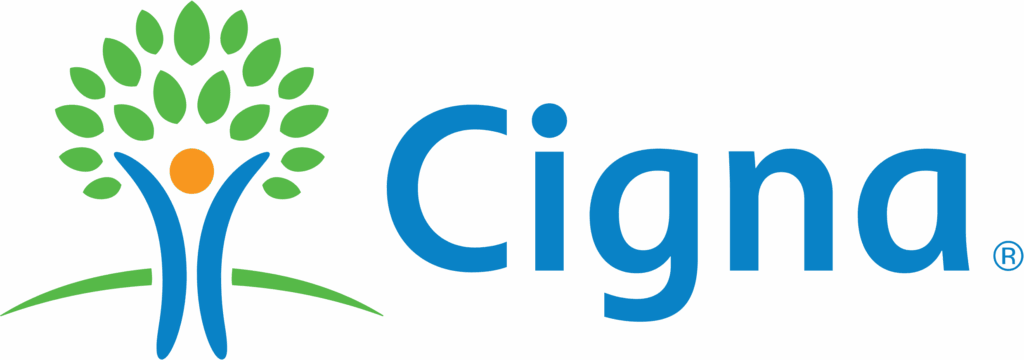Understanding the Landscape of Relapse
Before we can effectively prevent relapse, it’s crucial to understand what it is and how it unfolds. Relapse is often mistakenly seen as a sudden, abrupt event where someone “falls off the wagon.” While the act of using substances again is the most visible part of relapse, the process typically begins much earlier. It’s a gradual return to old patterns of thinking, feeling, and behaving that eventually lead back to substance use. Understanding this process is fundamental to prevention.
Definition and Stages of Relapse:
Relapse can be defined as the return to substance use after a period of sobriety. However, addiction expert Terence Gorski, a pioneer in relapse prevention, described three distinct stages that precede physical relapse:
1. Emotional Relapse: In this stage, you’re not thinking about using, but your emotions and behaviors are setting you up for potential problems down the road. You might be isolating yourself, suppressing emotions, not attending support group meetings, neglecting self-care (like sleep or healthy eating), or becoming irritable and anxious. This is a stage of internal turmoil and poor coping mechanisms.
2. Mental Relapse: This stage involves a psychological battle. Part of you wants to use, and part of you wants to stay sober. Your thinking starts shifting. You might begin thinking about people, places, and things associated with past substance use. You might romanticize past use (“It wasn’t that bad,” or “Just one won’t hurt”). Cravings might become more frequent and intense. You might start planning scenarios where using is possible, even if you tell yourself you won’t act on them. This stage is characterized by internal conflict and a growing preoccupation with substance use.
3. Physical Relapse: This is the final stage, where you actually engage in substance use. While the goal of a relapse prevention plan is to avoid reaching this stage, it’s important to know that a physical slip does not negate all progress. It is a setback, but it can be a learning opportunity if addressed quickly and with professional support.
Recognizing these stages is vital. The earlier you identify signs of emotional or mental relapse, the sooner you can intervene and prevent a physical relapse.
Common Triggers and Warning Signs:
Triggers are people, places, things, feelings, or situations that can stimulate cravings or a desire to use substances. Identifying your personal triggers is a cornerstone of relapse prevention. Triggers can be broadly categorized:
– Internal Triggers: These come from within you.
– Emotional States: Stress, anxiety, depression, loneliness, boredom, anger, frustration, sadness, even excessive happiness or excitement. Untreated
mental health conditions (
dual diagnosis) are significant internal triggers.
– Physical States: Pain, fatigue, hunger, thirst, poor sleep.
– Thoughts: Fantasizing about using, rationalizing use, negative self-talk, thoughts about past using experiences.
– External Triggers: These come from your environment.
– People: Running into old using buddies, dealing with stressful relationships, being around people who still use.
– Places: Visiting old neighborhoods, bars, parties, or even specific rooms or houses where you used.
– Things: Seeing drug paraphernalia, certain smells, sights, or sounds associated with past use (e.g., a specific song, a bottle).
– Situations: Social events where substances are present, arguments, financial problems, job loss, celebrations, holidays.
Warning Signs: These are changes in behavior, thoughts, or feelings that indicate you might be heading towards relapse. They are often a response to triggers and can signal progression through the emotional and mental stages of relapse. Warning signs are highly personal, but common ones include:
– Returning to old thinking patterns (e.g., self-pity, blame, grandiosity).
– Dishonesty or secrecy.
– Minimizing the severity of past substance use.
– Stopping attendance at support group meetings (like AA, NA).
– Avoiding contact with your support network.
– Increased stress, anxiety, or irritability.
– Changes in sleep or eating patterns.
– Neglecting personal hygiene or responsibilities.
– Increased isolation.
– Thinking about or planning to be in risky situations.
– Believing you can control your substance use (“just one”).
Understanding triggers and recognizing your specific warning signs is the first critical step in building a relapse prevention plan. It’s about becoming deeply aware of your internal and external landscape and how it impacts your recovery. Professional guidance through
telehealth addiction treatment can be incredibly helpful in identifying these personal patterns.
Essential Building Blocks of Your Prevention Plan
A comprehensive relapse prevention plan is more than just a list of triggers to avoid. It’s a multi-faceted strategy incorporating various elements that support your sobriety and overall well-being. These are the key components that form the foundation of your personalized roadmap.
Identifying Personal Triggers:
This is perhaps the most foundational step. While common triggers exist, your specific triggers are unique to your history, experiences, and circumstances. Identifying them requires honest self-reflection and often, the guidance of a therapist or counselor.
– Self-Assessment: Think back to your past substance use. When and where did you most often use? Who were you with? How were you feeling before you used? What situations led you to crave substances?
– Journaling: Keeping a journal can help you track your moods, experiences, and any urges or thoughts about using. This can reveal patterns you might not otherwise notice.
– Therapy Sessions: In therapy, especially modalities like
Online CBT Therapy (Cognitive Behavioral Therapy), you can work with a therapist to explore your past, identify triggers, and understand the thoughts and feelings associated with them.
– Create a List: Compile a list of your high-risk situations, emotional states, people, places, and things. Be specific. Knowing your triggers allows you to prepare for them or avoid them altogether when possible.
Developing Coping Strategies:
Once you’ve identified your triggers, the next step is to develop healthy ways to cope with them when they arise. This involves building a toolkit of alternative behaviors and thought patterns to manage stress, difficult emotions, cravings, and high-risk situations without resorting to substances.
– Healthy Stress Management: Instead of using substances to cope with stress, learn techniques like deep breathing, meditation, yoga, or progressive muscle relaxation. Regular exercise is also a powerful stress reliever.
– Managing Difficult Emotions: Learn to identify and process your emotions healthily. This might involve talking to a trusted friend or therapist, journaling, expressing yourself creatively, or engaging in activities that help you feel calm and centered.
Dual diagnosis treatment, if you also struggle with mental health issues, is crucial here.
– Cravings Management: Cravings can be intense but are usually short-lived. Develop strategies like the “urge surfing” technique (riding out the craving like a wave), distracting yourself (calling someone, engaging in a hobby), delaying (telling yourself you’ll wait 15 minutes), or challenging the thought (reminding yourself why you want to stay sober).
– Problem-Solving Skills: Learn how to address problems directly rather than avoiding them or using substances to escape.
– Healthy Alternatives: Identify activities that bring you joy and fulfillment that are incompatible with substance use – hobbies, sports, spending time in nature, volunteering.
Building a Support Network:
You don’t have to do this alone. A strong support network is invaluable in recovery. These are the people you can turn to when you’re struggling, need to talk, or just need encouragement.
– Family and Friends: Rebuild or strengthen relationships with supportive loved ones who understand and respect your recovery journey.
Virtual couples counseling rehab or family therapy can be helpful in mending relationships and building a supportive home environment.
– Support Groups: Attending meetings like Alcoholics Anonymous (AA), Narcotics Anonymous (NA), SMART Recovery, or other peer support groups provides connection, shared experience, and accountability. Many of these groups now offer online meetings, fitting well with
telehealth addiction treatment.
– Sponsor or Mentor: If participating in a 12-step program, a sponsor is a vital resource – someone who has more sobriety time and can offer guidance and support.
– Therapist or Counselor: Professional support is critical. A therapist provides tools, strategies, and a safe space to process challenges.
Remote IOP programs offer structured access to professional therapy and group support.
Establishing a Daily Routine:
Structure and routine provide stability and help prevent boredom or idle time, which can be triggers.
– Consistent Schedule: Try to wake up and go to bed around the same time each day.
– Planned Activities: Fill your day with purposeful activities – work, hobbies, exercise, support group meetings, time with loved ones.
– Self-Care: Schedule time for self-care activities like healthy meals, exercise, hygiene, relaxation, and hobbies.
– Responsibility: Taking on responsibilities (work, volunteering, household chores) fosters a sense of purpose and normalcy.
Setting Realistic Goals:
Setting and achieving goals builds self-esteem and provides direction.
– Recovery Goals: Goals related to your sobriety, such as attending a certain number of meetings per week, checking in with your sponsor daily, or practicing specific coping strategies.
– Life Goals: Goals related to other areas of your life – career, education, relationships, hobbies, health. Achieving these goals provides motivation and reinforces the benefits of
staying sober.
– Break Down Goals: Make goals specific, measurable, achievable, relevant, and time-bound (SMART). Break larger goals into smaller, manageable steps to avoid feeling overwhelmed.
Incorporating these building blocks into your life creates a strong foundation for lasting recovery. They provide the structure, skills, and support needed to navigate the challenges that inevitably arise.
Crafting Your Personalized Roadmap to Recovery
Building your
relapse prevention plan is an active process, not just a passive exercise. It requires introspection, planning, and a commitment to ongoing effort. Here is a step-by-step guide to help you craft a plan that is truly personalized to your needs and circumstances.
Step-by-Step Guide to Crafting a Personalized Plan:
1. Reflect on Your Substance Use History:
– When and why did you start using?
– What substances did you use, how much, and how often?
– What were the consequences of your use?
– What triggers led to your use in the past? Think about specific people, places, feelings, or events.
– What warning signs did you exhibit before using?
– What coping mechanisms (healthy or unhealthy) did you use before?
– What has helped you stay sober in the past, if you have had periods of sobriety?
1. Identify Your Current Triggers and Warning Signs:
– Based on your reflection, list your most significant personal triggers now. Consider current stressors, relationships, environments, and emotional states.
– Describe what your personal warning signs look like today. How do you feel, think, or behave when you are starting to experience difficulties?
1. Develop Your Coping Strategies for Each Trigger/Situation:
– For each trigger or high-risk situation you identified, brainstorm specific healthy coping strategies you will use.
– Example: If boredom is a trigger, your strategies might include: “Call my sponsor,” “Go for a walk,” “Read a book,” “Work on my hobby project.”
– Example: If stress from work is a trigger, strategies might include: “Take 10 minutes to meditate,” “Use deep breathing exercises,” “Talk to my therapist in my virtual session,” “Go to the gym after work.”
– List strategies for managing cravings, difficult emotions, and social pressures.
1. Outline Your Support Network and How You Will Use It:
– List the names and contact information of people you can call for support (sponsor, family, sober friends, therapist).
– Specify how you will use this network. Will you call someone daily? When you feel an urge? When you are stressed?
– Plan your attendance at support group meetings (in-person or online).
– Include professional support contacts (therapist, counselor).
1. Create a Structured Daily and Weekly Schedule:
– Map out your typical day/week, including work, sleep, meals, exercise, recovery activities (meetings, therapy), hobbies, and social time.
– Aim for consistency.
– Include dedicated time for self-care and relaxation.
1. Set Realistic, Actionable Goals:
– Write down your short-term (weekly/monthly) and long-term (6 months/yearly) recovery and life goals.
– Break down larger goals into small steps.
– Regularly review your progress towards these goals.
1. Develop an Emergency Plan:
– What will you do if you experience intense cravings or are in a high-risk situation you can’t immediately leave?
– Have a list of emergency contacts readily available.
– Identify safe places you can go.
– Know the number for a crisis hotline or local recovery resources.
– Crucially, know when and how to seek immediate professional help, such as contacting your treatment center or therapist.
1. Write It Down and Keep It Accessible:
– Your plan should be written down clearly. This makes it real and something you can refer to.
– Keep it in a place where you can easily access it – in your wallet, on your phone, or in a journal. Consider typing it up and having it saved digitally and physically.
1. Review and Revise Regularly:
– Your life will change, and your triggers and needs may evolve. Your
relapse prevention plan is a living document.
– Review it regularly (e.g., monthly or quarterly) and especially after any challenging period or significant life change.
– Adjust it as needed to ensure it remains relevant and effective.
Tools and Resources for Managing Cravings and Stress:
Beyond the strategies listed above, various tools can support your plan:
– Recovery Apps: Many smartphone apps offer daily affirmations, meeting finders, sobriety counters, and tools for tracking moods and triggers.
– Mindfulness and Meditation Apps: Apps like Headspace, Calm, or Insight Timer can teach you techniques to manage stress and cravings.
– Journaling: A physical notebook or a digital journal app.
– Crisis Hotlines: Have national and local numbers readily available.
– Online Resources: Websites dedicated to recovery, forums, and blogs can provide support and information.
– Medication: For some,
MAT Treatment Online (Medication-Assisted Treatment) can be a valuable tool for managing cravings and withdrawal symptoms, always as part of a comprehensive treatment plan including therapy.
Incorporating Healthy Lifestyle Changes:
Your physical and mental health are deeply interconnected with your sobriety. Prioritizing healthy lifestyle changes strengthens your ability to cope and reduces vulnerability to triggers.
– Nutrition: Eating balanced meals regularly helps stabilize mood and energy levels. Avoid excessive sugar or caffeine, which can contribute to anxiety and restlessness.
– Exercise: Regular physical activity is a powerful mood booster, stress reducer, and improves sleep. Find activities you enjoy.
– Sleep Hygiene: Aim for 7-9 hours of quality sleep per night. Establish a consistent sleep schedule and create a relaxing bedtime routine. Poor sleep significantly increases stress and can make managing cravings harder.
– Mindfulness and Relaxation: Incorporate daily practices like meditation, deep breathing, or gentle stretching to stay present and manage daily stressors.
– Engaging in Hobbies: Reconnect with old hobbies or discover new ones that bring you joy and a sense of accomplishment. This provides healthy ways to spend your time and cope with boredom.
– Avoiding Isolation: Make an effort to connect with supportive people regularly. Isolation is a common warning sign of relapse.
Crafting your
relapse prevention plan takes time and effort, but it’s an investment in your future. Remember, it’s a personal document, tailored specifically to you. Don’t hesitate to seek professional help from providers specializing in
telehealth addiction treatment to guide you through this process.
The Vital Role of Professional Guidance
While a
relapse prevention plan is deeply personal, you don’t have to create it alone. Professional support is not just beneficial; it’s often crucial for developing a robust, effective plan and having the tools to implement it successfully. In today’s world, flexible and accessible options like
remote IOP and
telehealth addiction treatment make getting this support more convenient than ever, especially for those in areas like Orange County, California.
Benefits of Remote IOP and Telehealth Addiction Treatment:
– Accessibility and Convenience:
Telehealth addiction treatment removes geographical barriers and transportation issues. You can access therapy and support from the comfort and privacy of your own home. This is particularly helpful for people with busy schedules, mobility issues, or those living in areas without local in-person treatment centers.
– Flexibility:
Remote IOP (Intensive Outpatient Programs) allow you to receive a high level of care, including multiple therapy sessions per week, group therapy, and individual counseling, while still living at home and maintaining work, school, or family responsibilities. This integration into your daily life is ideal for practicing relapse prevention strategies in real-world situations.
– Privacy and Comfort: Some individuals feel more comfortable opening up and discussing sensitive topics like triggers and past experiences in a familiar environment.
– Continuity of Care: Telehealth makes it easier to maintain consistent contact with your treatment team, which is essential for long-term recovery and adapting your
relapse prevention plan over time.
How Online CBT Therapy and MAT Treatment Can Aid in Relapse Prevention:
– Online CBT Therapy: Cognitive Behavioral Therapy (CBT) is a cornerstone of addiction treatment and relapse prevention. Delivered effectively through telehealth, CBT helps you:
– Identify and challenge negative thought patterns that contribute to substance cravings or relapse thinking.
– Develop healthier coping mechanisms for stress, difficult emotions, and triggers.
– Learn practical skills for managing high-risk situations.
– Improve problem-solving abilities.
Online CBT helps you understand the connection between your thoughts, feelings, and behaviors, empowering you to change patterns that put your sobriety at risk.
– MAT Treatment Online: Medication-Assisted Treatment (MAT), which may include medications like buprenorphine, naltrexone, or acamprosate, can be a vital component of a comprehensive
relapse prevention plan for certain substance use disorders, particularly opioid and alcohol addiction. Administered with professional medical oversight and often managed through
MAT Treatment Online, these medications can:
– Reduce cravings, making it easier to resist the urge to use.
– Minimize withdrawal symptoms, which can be a significant trigger for relapse.
– Block the effects of certain substances.
It’s important to note that MAT is most effective when combined with therapy and counseling. It supports your physical recovery while therapy addresses the underlying psychological and behavioral aspects.
Importance of Virtual Couples Counseling in Maintaining Sobriety:
Addiction affects not just the individual but their entire family system. Relationship stress and lack of family support can be significant relapse triggers.
Virtual couples counseling rehab or family therapy can play a crucial role in relapse prevention by:
– Improving communication within the family.
– Healing damaged relationships and building trust.
– Educating family members about addiction and relapse warning signs.
– Helping family members learn how to support their loved one’s recovery effectively without enabling.
– Addressing underlying family dynamics that may contribute to stress or trigger individuals.
Having a supportive home environment and strong relationships is a powerful protective factor against relapse. Telehealth makes it easier for busy families to attend sessions together, regardless of their physical location.
Professional support provides expert knowledge, therapeutic tools, accountability, and a lifeline during challenging times. Whether it’s through individual therapy, group sessions, or medical management, integrating professional care into your
relapse prevention plan significantly increases your chances of
staying sober.
Finding Support with Compassion Recovery Center
If you are in Orange County, California, or anywhere in the state, and seeking flexible, accessible addiction treatment that prioritizes your needs and supports your
relapse prevention plan, Compassion Recovery Center is here to help. We specialize in providing high-quality
telehealth addiction treatment services, focusing on compassionate care and effective evidence-based therapies, tailored to your unique circumstances.
Overview of Services Offered by Compassion Recovery Center:
Compassion Recovery Center understands that recovery looks different for everyone. We offer a range of services delivered through our secure and convenient virtual platform, designed to provide comprehensive care that fits into your life.
– **
Virtual IOP Program:** Our Intensive Outpatient Program provides a structured level of care with multiple group and individual therapy sessions per week, allowing you to build recovery skills while remaining at home. This is a core component for many people building their
relapse prevention plan.
–
Intensive Outpatient Program (IOP): While our primary focus is virtual, understanding the IOP structure is key. It offers intensive support, covering topics crucial for prevention like trigger identification, coping skills, and building support systems. Our virtual format delivers this same high-quality program remotely.
–
Partial Hospitalization Program (PHP): For those requiring a higher level of structure than IOP, our virtual PHP offers more intensive daily programming, providing robust support during critical stages of early recovery.
–
Drug Rehab Programs and
Alcohol Rehab Programs: We offer comprehensive treatment for a wide range of substance use disorders, all delivered through our secure telehealth platform. Our programs address the physical, psychological, and social aspects of addiction.
–
Outpatient Detox: In some cases, a medically supervised detox is necessary before beginning treatment. We can facilitate safe, comfortable outpatient detox overseen by medical professionals, often with telehealth components for check-ins.
– **
Dual Diagnosis Treatment:** Many individuals struggling with addiction also have co-occurring
mental health conditions like anxiety, depression, or trauma. Our programs are equipped to treat both simultaneously, addressing a major potential trigger for relapse.
–
Mental Health Treatment: We provide dedicated mental health services, understanding the critical link between mental wellness and sustainable recovery.
–
Virtual Couples Counseling: Strengthening relationships is key to building a solid support system. We offer virtual counseling sessions to help couples and families heal and support the recovery process.
How Remote Drug Rehab in Orange County Can Support Your Recovery Journey:
For residents of Orange County seeking help, our
remote drug rehab Orange County services provide convenient access to top-tier care without requiring you to leave your home, family, or job. This allows you to:
– Receive evidence-based therapy tailored to your specific needs.
– Work with experienced clinicians who can help you identify personal triggers and develop customized coping strategies.
– Participate in group therapy sessions with peers who understand your struggles, building a virtual support community.
– Integrate your recovery seamlessly into your daily life in Orange County, practicing your
relapse prevention plan in real-world situations.
– Access specialized care for
dual diagnosis and mental health conditions.
– Receive support for family members through
virtual couples counseling rehab.
– Potentially access
MAT Treatment Online services as part of your comprehensive plan.
Our
virtual rehab California programs are designed to equip you with the knowledge, skills, and support necessary to build and maintain a strong
relapse prevention plan. We focus on empowering you to take control of your recovery.
Success Stories and Outcomes from Virtual Rehab California:
While individual experiences vary, many clients find significant success with
virtual rehab California. The flexibility and accessibility of telehealth treatment can lead to:
– Increased program completion rates due to fewer barriers to attendance.
– Smoother transition back into daily life post-treatment, as clients have been practicing coping skills in their home environment.
– Stronger family involvement when incorporating virtual family therapy.
– Consistent engagement with support systems and therapy sessions over time.
– Improved mental and physical health outcomes.
Building your
relapse prevention plan is a key part of the journey. Let Compassion Recovery Center partner with you. Our team is ready to provide the expert, compassionate care you need to build a strong foundation for
staying sober. We offer
admissions information online and can help you
verify your insurance online quickly and confidentially.
Ready to take the next step?
Contact us for a confidential assessment today to see how our
virtual IOP and
telehealth addiction treatment services can support your recovery and your personalized
relapse prevention plan. You can also
start your free assessment directly.
Maintaining Your Course: Long-Term Sobriety
Creating a
relapse prevention plan is a significant achievement, but recovery is a lifelong journey. Maintaining long-term sobriety requires ongoing effort, vigilance, and a commitment to personal growth. Your plan is not a static document you create once and forget; it’s a dynamic tool that evolves with you.
Strategies for Ongoing Recovery and Relapse Prevention:
– Continuous Self-Care: Prioritize your physical and mental health every single day. This includes consistent sleep, nutritious eating, regular exercise, and engaging in activities that reduce stress and bring you joy. Neglecting basic needs makes you more vulnerable.
– Active Participation in Support Systems: Stay connected to your support network. Attend support group meetings (AA, NA, SMART Recovery, etc.), check in with your sponsor or sober friends regularly, and maintain contact with your therapist or counselor, especially if using
telehealth addiction treatment, which makes ongoing connection convenient.
– Practice Healthy Coping Skills: Continuously work on and utilize the coping strategies you developed in your plan. The more you practice them, the more automatic they become when you face a challenge.
– Mindfulness and Self-Awareness: Stay present and pay attention to your thoughts, feelings, and physical sensations. This increased self-awareness helps you identify potential warning signs or triggers early.
– Healthy Boundaries: Learn to set boundaries with people and situations that are detrimental to your sobriety. This might mean limiting contact with certain individuals or avoiding high-risk environments.
– Engage in Meaningful Activities: Find purpose and fulfillment in activities that align with your values – work, volunteering, hobbies, spending time with loved ones, pursuing education. Having a life you love makes sobriety worthwhile.
– Give Back: Helping others can be incredibly rewarding and reinforcing for your own recovery. This could be through sponsoring someone, volunteering, or simply being supportive of others in recovery.
Importance of Continuous Self-Assessment and Adjustment of the Plan:
Life is full of changes – new jobs, relationships, stressors, successes, and challenges. What was a trigger six months ago might not be today, and new triggers might emerge.
– Regular Check-Ins: Schedule regular times to review your
relapse prevention plan. Monthly or quarterly check-ins are a good idea.
– Reflect on Experiences: After facing a challenging situation or trigger, reflect on how you handled it. What worked well? What could you have done differently? Update your plan based on these lessons learned.
– Assess Your Support System: Is your current support network meeting your needs? Do you need to connect with new people or seek additional professional support?
– Evaluate Your Goals: Are your goals still relevant? Do you need to set new ones?
– Be Honest with Yourself: If you notice warning signs emerging, be honest about them. Don’t minimize difficulties or ignore potential risks.
– Seek Feedback: Talk to your therapist, sponsor, or trusted sober friends about your plan and how you’re doing. They might offer insights you haven’t considered.
Adjusting your plan is a sign of strength and proactive recovery, not failure. It means you are actively engaged in your sobriety and adapting your strategy to meet life’s evolving demands.
Encouragement to Seek Help When Needed:
This is perhaps the most critical aspect of long-term
staying sober. There will be tough days, intense cravings, or moments where you feel overwhelmed. Recognizing these moments and reaching out for help immediately is paramount.
– Don’t Wait: Don’t let warning signs escalate. The earlier you reach out, the easier it is to navigate the challenge.
– Use Your Emergency Plan: Refer to the emergency contacts and strategies you outlined in your plan.
– Contact Your Support Network: Call your sponsor, therapist, or a trusted friend or family member.
– Attend a Meeting: Go to an in-person or online support group meeting. Hearing others’ experiences and sharing your own can provide immediate relief and perspective.
– Reach Out to Compassion Recovery Center: If you’re struggling and need professional support or feel you are at risk, our team is here for you. We offer flexible
telehealth addiction treatment and can provide guidance and support.
Reach out today.
Seeking help is a sign of courage and commitment to your recovery, not weakness. It means you are utilizing the resources available to you and prioritizing your well-being. Your
relapse prevention plan is a powerful tool, but it works best when you actively use it and lean on your support systems when needed.
Taking the Next Step Towards Lasting Recovery
Creating and maintaining a
relapse prevention plan is one of the most empowering actions you can take in your recovery journey. It shifts you from feeling reactive to potential challenges to being proactive, prepared, and resilient. We’ve covered the importance of understanding relapse as a process, identifying your unique triggers and warning signs, building a comprehensive plan with essential components, and utilizing practical tools and healthy lifestyle changes. Crucially, we’ve highlighted the indispensable role of professional support, particularly through accessible formats like
remote IOP and
telehealth addiction treatment, which are central to the services offered by Compassion Recovery Center in Orange County and throughout California.
Remember, your
relapse prevention plan is your personal roadmap. It’s tailored to your specific history, triggers, strengths, and support systems. It’s a living document that you should revisit and adjust as you grow in recovery and life changes. Maintaining long-term sobriety is an ongoing process that requires continuous self-care, active participation in support networks, and the willingness to seek help when needed.
If you are ready to build or strengthen your
relapse prevention plan and need professional guidance, Compassion Recovery Center is here to support you. Our compassionate team specializes in providing flexible, evidence-based
telehealth addiction treatment, including
virtual IOP,
virtual PHP,
dual diagnosis treatment, and
virtual couples counseling, designed to fit into your life and empower your recovery journey, especially for those seeking
remote drug rehab Orange County.
Don’t wait to take control of your recovery. Take the proactive step today to build your roadmap for
staying sober.
Ready to get started?
Start your recovery journey today. You can
verify insurance online to explore your treatment options, or
contact us for a confidential assessment to learn more about how our virtual programs can help you create and maintain a strong
relapse prevention plan.
Get help for substance abuse now.
What should be included in a relapse prevention plan?
A comprehensive relapse prevention plan should include identifying personal triggers, developing specific coping strategies for high-risk situations, building a strong support network (including contacts), establishing a structured daily routine, setting realistic recovery and life goals, and outlining an emergency plan for intense cravings or difficult situations. It should also include strategies for self-care and healthy lifestyle maintenance.
What are the four main ideas in relapse prevention?
While frameworks can vary, common core ideas in relapse prevention often include: 1. Identifying and understanding personal triggers and warning signs. 2. Developing and practicing effective coping strategies. 3. Building and utilizing a strong support system. 4. Making lifestyle changes that support long-term sobriety and well-being.
How to create a successful relapse prevention plan?
Creating a successful plan involves honest self-reflection to identify triggers and warning signs, actively developing specific coping strategies for those triggers, outlining a robust support network with contact information, structuring your daily life with healthy routines and goals, creating an emergency plan, writing the plan down, and regularly reviewing and adjusting it as needed. Professional guidance, such as through telehealth addiction treatment, is highly recommended.
What are the five rules of relapse prevention?
Based on principles from experts like Terence Gorski, common “rules” or guidelines for relapse prevention include: 1. Recognize and manage warning signs. 2. Practice honest self-appraisal daily. 3. Practice daily problem-solving and coping skills. 4. Seek help from your support network or professionals immediately when needed. 5. Maintain a balanced lifestyle involving self-care, routine, and meaningful activities.
What is a key element in developing a personal relapse prevention plan?
A key element is identifying personal triggers and warning signs. While general triggers exist, understanding your unique history, emotional responses, and behavioral patterns that have led to substance use in the past is fundamental to creating strategies that are specific and effective for you.








